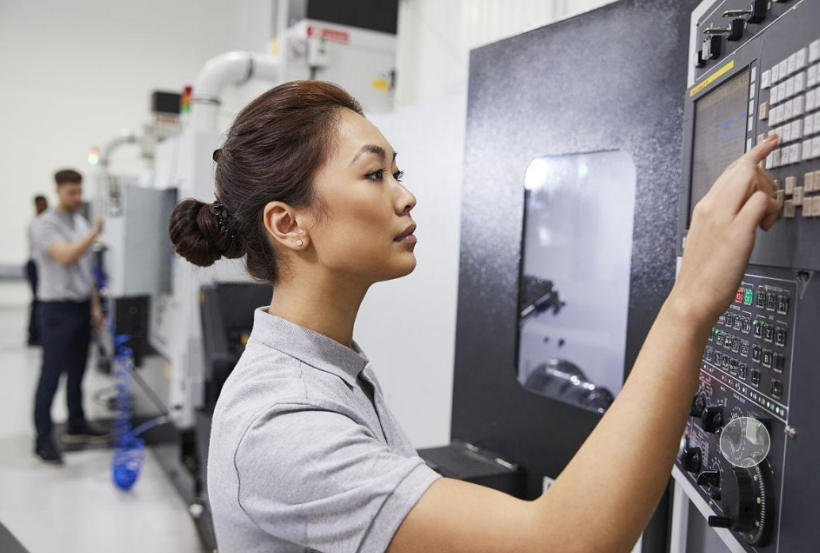G and M Codes: Understanding the CNC Programming Languages
Computer Numerical Control (CNC) machines have revolutionized the manufacturing industry by automating the control of machining tools. At the heart of CNC programming are G and M codes, which are essential for guiding the movements and operations of CNC machines. This blog aims to provide a comprehensive understanding of these programming languages and their significance in CNC machining.
What Are G and M Codes in CNC Programming?
G and M codes are the standard programming languages used to control CNC machines. These codes are part of the broader set of instructions known as G-code (also called RS-274), which provides the commands necessary for machining operations. G codes typically control the movement and functions of the CNC machine, while M codes manage miscellaneous functions such as coolant control and program stops.
G Codes: Controlling Machine Movements
G codes (preparatory codes) are responsible for guiding the CNC machine’s movements and defining how machining operations are performed. Each G code represents a specific function, such as moving the tool to a certain position, setting the feed rate, or selecting the coordinate system.
Here are some common G codes and their functions:
– G00: Rapid positioning – moves the tool quickly to a specified location.
– G01: Linear interpolation – moves the tool in a straight line at a specified feed rate.
– G02: Circular interpolation clockwise – moves the tool in a clockwise circular path.
– G03: Circular interpolation counterclockwise – moves the tool in a counterclockwise circular path.
– G17, G18, G19: Plane selection – selects the plane (XY, ZX, YZ) for circular interpolation.
– G20: Programming in inches.
– G21: Programming in millimeters.
– G28: Return to home position – moves the tool to the machine’s home position.
– G40: Cutter radius compensation off.
– G41: Cutter radius compensation left.
– G42: Cutter radius compensation right.
M Codes: Managing Miscellaneous Functions
M codes (miscellaneous codes) handle non-movement-related functions of the CNC machine. These codes control various auxiliary operations essential for the machining process.
Here are some common M codes and their functions:
– M00: Program stop – stops the program until the operator resumes it.
– M01: Optional stop – stops the program if the optional stop function is activated.
– M02: End of program – signals the end of the program.
– M03: Spindle on clockwise – starts the spindle rotating clockwise.
– M04: Spindle on counterclockwise – starts the spindle rotating counterclockwise.
– M05: Spindle stop – stops the spindle.
– M06: Tool change – instructs the machine to change the tool.
– M08: Coolant on – turns on the coolant.
– M09: Coolant off – turns off the coolant.
– M30: Program end and rewind – ends the program and prepares it for the next cycle.
The Importance of G and M Codes in CNC Machining
G and M codes are fundamental to CNC programming for several reasons:
- Precision and Accuracy: These codes allow for precise control of machine movements, ensuring accurate machining of parts.
- Automation: By automating machine operations, G and M codes increase efficiency and reduce the potential for human error.
- Versatility: G and M codes can be used across various CNC machines and processes, making them versatile for different manufacturing applications.
- Customization: Programmers can tailor G and M codes to specific machining tasks, optimizing the manufacturing process for different materials and designs.
- Consistency: The use of standardized codes ensures consistency in production, leading to higher quality and repeatability of manufactured parts.
Example: Writing a Simple CNC Program
To illustrate the use of G and M codes, here’s an example of a simple CNC program:
“`gcode
%
O1001 (Program number)
G20 (Programming in inches)
G00 X0 Y0 (Rapid move to the start position)
G01 Z-0.1 F10 (Linear move to cutting depth at feed rate 10)
G02 X1 Y1 I0 J1 (Clockwise circular move to X1 Y1 with center I0 J1)
G01 X2 Y0 (Linear move to X2 Y0)
G00 Z1 (Rapid move to safe height)
M05 (Spindle stop)
M30 (End of program)
%
“`
Conclusion
Understanding G and M codes is crucial for anyone involved in CNC machining. These codes form the backbone of CNC programming, enabling precise control of machine operations and enhancing manufacturing efficiency. Whether you’re a beginner or an experienced machinist, mastering G and M codes will help you unlock the full potential of CNC technology and achieve superior machining results.
Reach out to IN3DTEC to get instant online CNC Machining quote.















